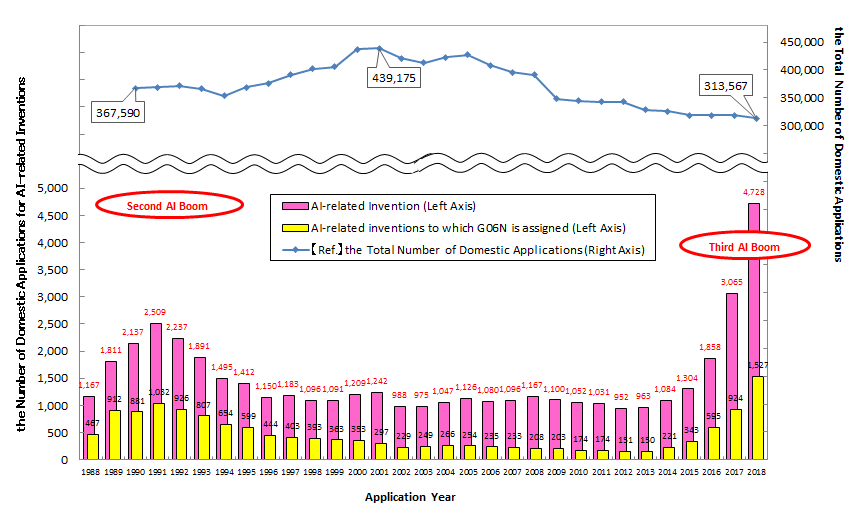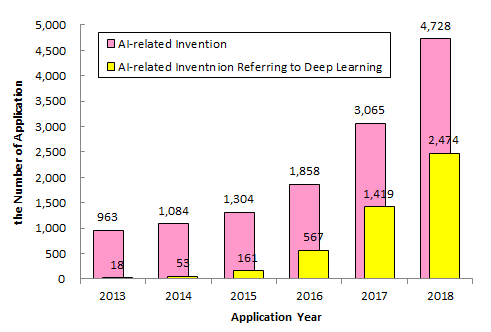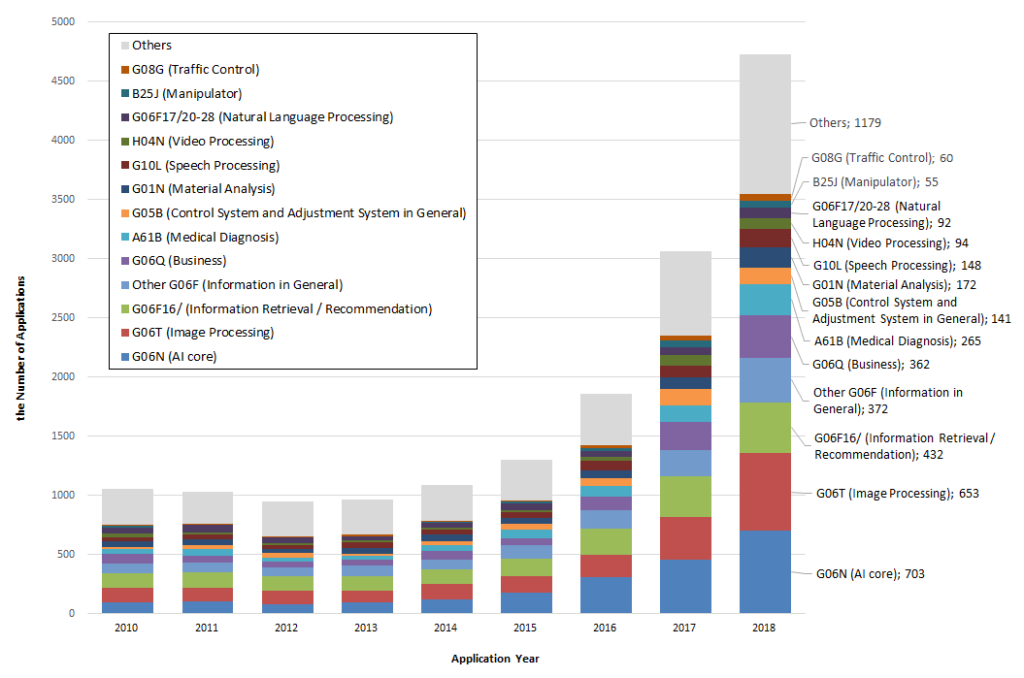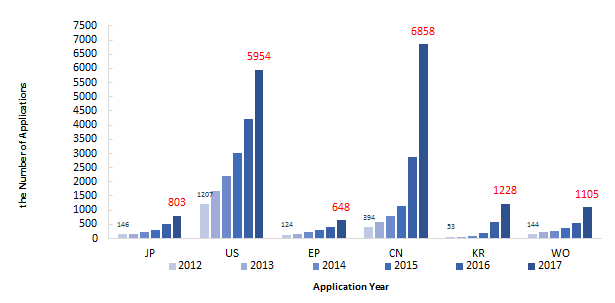July 27, 2020
Dramatic increase in applications for AI-related inventions backed by the third AI boom
The Japan Patent Office (JPO) conducted research for recent trends in patent applications for artificial intelligence (AI) related inventions at home and abroad, which have been gaining attention in recent years.
Background
In response to the rise of companies’ interest in filing patent applications for AI-related inventions (*1) backed by the development of AI technologies centering on deep learning, the JPO, in July 2019, conducted research for recent trends in patent applications for AI-related inventions at home and abroad and issued a report on the research results. The JPO hereby announces that it updated the research results based on the data on such applications which have been newly published until April 2020.
*Note 1: AI-related inventions include [i] those involving AI-core technologies classified in Subclass G06N of the International Patent Classification (IPC) system and [ii] those in which AI is applied to any technical fields.
Summary of the research results
(1) The number of domestic patent applications for AI-related inventions was about 4,700 in 2018, up by about 54% from the previous year, showing a dramatic increase since 2014 backed by the impact of the third AI boom. Out of this figure, the number of applications for core technologies for AI was about 1,500, up by about 65% from the previous year.

(2) Recent AI-related inventions tend to use machine learning as their main technology. In particular, the number of applications which refer to deep learning has been dramatically increasing since 2014, and over a half of the domestic patent applications for AI-related inventions in 2018 refer to deep learning.

(3) The number of applications in which AI is applied to the field of image processing, information retrieval/recommendation, business methods or medical diagnoses is outstanding. In particular, the number of those in which AI is applied to the field of control/robotics or medical diagnoses has been growing in recent years.

(4) The number of applications for AI-core technologies filed with any of the Five IP Offices (Japan, the U.S., the EPO, China, and the ROK) and the number of those filed under the Patent Cooperation Treaty (PCT) system (*2) are both increasing, out of which the number of such applications filed with the U.S. or China are prominent.
*Note 2: If an applicant files an application under the PCT system, the applicant is eligible to enjoy the effect equivalent to the effect which he/she may gain if he/she files the application with all PCT member countries at the same time.

(JP: Japan, US: the U.S., EP: EPO, CN: China, KR: ROK, and WO: PCT international applications regardless of applicant nationality)
(5) The number of applications for neural networks, a type of AI-core technology, has been growing. Out of them, the ratios of the applications related to deep learning have been increasing at home and abroad, and in particular, the ratios of such applications filed with the U.S. and Japan are growing.

(JP: Japan, US: the U.S., EP: EPO, CN: China, KR: ROK, and WO: PCT international applications regardless of applicant nationality)

(JP: Japan, US: the U.S., EP: EPO, CN: China, KR: ROK, and WO: PCT international applications regardless of applicant nationality)

